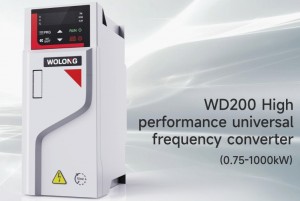A Variable Frequency Drive (VFD), also known as an adjustable frequency drive or inverter, is an electronic device used to control the speed and torque of an electric motor by varying the frequency and voltage of its power supply. VFDs are widely used in industrial and commercial applications to improve energy efficiency, enhance process control, and reduce mechanical stress on equipment.
How Does a VFD Work?
A VFD operates by converting the incoming alternating current (AC) power into direct current (DC) using a rectifier. The DC power is then converted back into AC power with an inverter, but with adjustable frequency and voltage levels. By controlling the frequency of the AC power supplied to the motor, the VFD can regulate the motor’s speed. This allows the three phase asynchronous motor to operate at optimal speeds for different tasks, rather than running at a constant speed, which can lead to energy waste.
Key Components of a VFD:
- Rectifier: Converts AC power to DC power.
- DC Bus: Stores and filters the DC power.
- Inverter: Converts DC power back to AC power with variable frequency and voltage.
- Control Unit: Manages the operation of the VFD, including speed and torque control.
Benefits of Using a VFD
Energy Efficiency: By adjusting the motor speed to match the load requirements, VFDs can significantly reduce energy consumption, especially in applications like pumps, fans, and compressors.
Improved Process Control: VFDs allow for precise control of motor speed, which can enhance the accuracy and consistency of industrial processes.
Reduced Mechanical Stress: Soft-start and soft-stop capabilities of VFDs minimize mechanical wear and tear, extending the lifespan of motors and other equipment.
Cost Savings: Lower energy usage and reduced maintenance costs contribute to overall cost savings.
A Variable Frequency Drive is a versatile and efficient solution for controlling electric motors in various applications. By enabling precise speed and torque control, VFDs not only improve energy efficiency but also enhance process control and reduce operational costs. As industries continue to prioritize sustainability and efficiency, the adoption of VFD technology is expected to grow, making it an essential component in modern electrical systems.
Post time: Feb-12-2025


